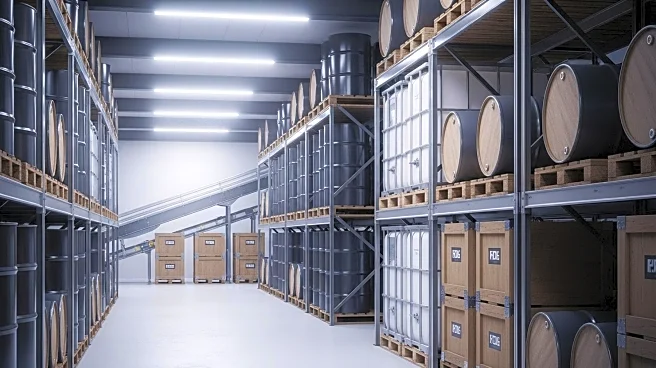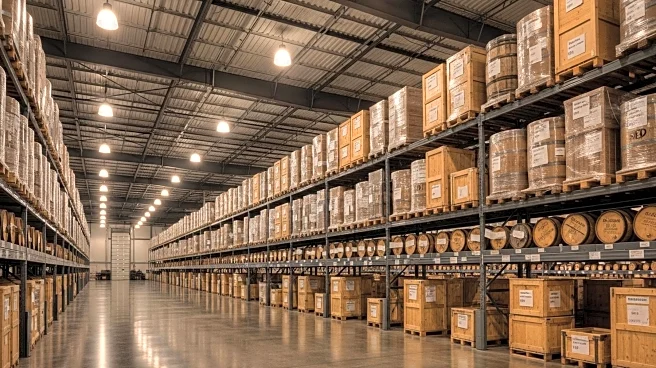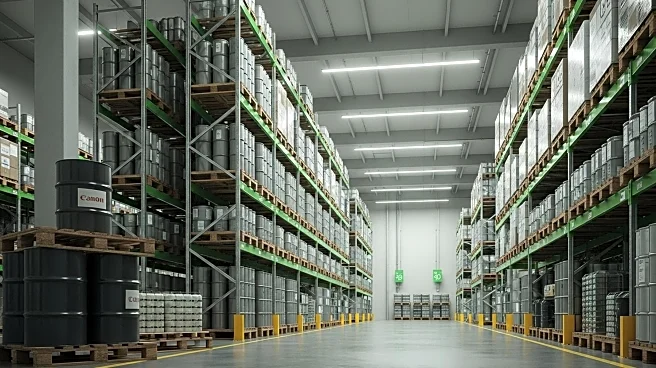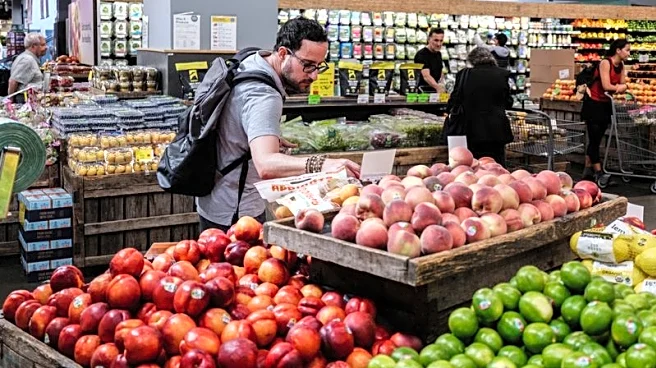What's Happening?
Diageo is undertaking a significant restructuring of its North American supply chain, aiming to enhance cost efficiency, sustainability, and long-term profitability. The company plans to close its Amherstburg, Ontario bottling facility by February 2026, shifting operations to Valleyfield, Quebec, and other sites closer to the U.S. This move is part of Diageo's 'Accelerate' program, which seeks to improve operational resilience and address the financial impact of U.S. tariffs on UK and European imports. The restructuring involves a focus on premium brands like Don Julio and Crown Royal, aiming to offset inflationary pressures and maintain growth in the competitive spirits market.
Why It's Important?
This strategic shift is crucial for Diageo as it seeks to balance cost-cutting with innovation and sustainability. The company's recognition as a 2025 NextGen Supply Chain Visionary Award Winner underscores its commitment to using advanced technologies like drones for agave irrigation and sustainable glass production. Investments in hydrogen fuel cell trucks and a new manufacturing hub in Alabama highlight Diageo's efforts to reduce carbon emissions and logistics expenses. These initiatives align with global ESG trends and cater to consumer preferences for eco-conscious brands. However, the strategy's success depends on managing transition costs without compromising brand equity or operational continuity.
What's Next?
Diageo faces the challenge of executing its supply chain overhaul without disrupting relationships with distributors or delaying product availability. The company's shares have fallen over 20% since the announcement, reflecting investor concerns about execution risks and short-term impacts. The success of this strategy will be measured by its ability to achieve the $625 million cost-cutting target over three years, expand margins, and generate consistent cash flow. Diageo's focus on premiumization and sustainability offers a compelling long-term narrative, but the true test will be whether these structural changes translate into tangible financial benefits.












